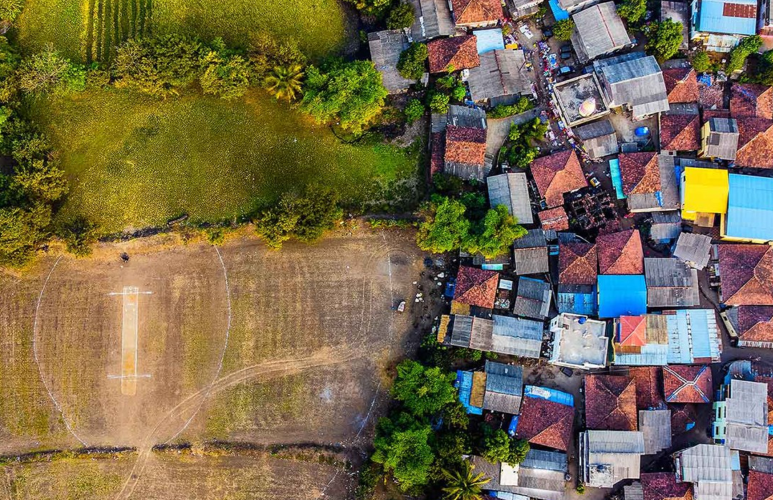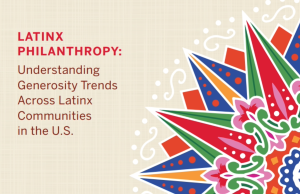India’s economic health is growing, with the country’s gross domestic product increasing by 8.7% for fiscal year 2022. Spending in the country’s social sector as part of GDP is similarly increasing, growing by 8.6% in fiscal year 2021 to 9.6% in FY 2022.
Much of that growth was spurred by a 35% gain in public spending. Private philanthropy has grown by only 8% between FY 2017 through FY 2022, with private contributions topping out at around $13 billion in the most recent year.
Corporate social responsibility spending has been boosted by the country’s for-profit sector. India requires that corporations allocate at least 2% of average profit-after taxes to corporate social responsibility activities, and of late businesses have been giving more than the mandated 2%.
Giving has slacked, however, among India’s ultrahigh net worth individuals (UNHI) — those with net worth in excess of roughly $121 million. Among this cohort, giving has shrunk by 5% from FY 2021, despite a 9% increase in cumulative wealth growth, according to India Philanthropy Report 2023, new data from Boston-based consultancy Bain and Company and Dasra, a strategic philanthropic organization based in Mumbai, India.
Discussion of UNHIs within the report often contains a caveat. Figures are usually given with the notation they do not include the activities of Azim Premji, an Indian multibillionaire who made his fortune in the information technology industry. In 2013, Premji became the first Indian to sign the Warren Buffett/Bill Gates Giving Pledge, and according to published accounts has, since then, given away more than $21 billion.
As the report authors note, “[o]ver the years, growth in contributions by top donors has been moderate, with a compound annual growth rate (CAGR) of 7% (excluding Azim Premji) from FY 2020–22, compared to their wealth increase of 24% and NIFTY50 [an Indian stock market index] growth of 25%. Given the decline in total donations and the overall increase in wealth in the last year, UHNIs’ giving as a percentage of net wealth declined. Compared with the U.S., UK, and China, Indian UHNIs donate substantially less across all wealth levels.”
The two next-highest tiers of wealthy individuals, including high net worth individuals (HNIs) – those with net worth between $24 million and $121 million and affluent individuals (whose net worth is between around $850,000 and $24 million) seem to be doing their part. HNIs had a 7% increase in their population, while the affluent population grew by 12%. Their combined contributions increased by 11% in FY 2022 from FY 2021. These increases have meant their contributions to overall domestic private giving have held steady during recent years. These two tiers donated around 28% in FY 2022, compared with 26% in FY 2021 and 27% reaching back to FY 2017.
There are other measures by which UHNIs are not measuring up. Overall Indian UNHIs contributed 0.04% of their wealth during FY 2022, compared with 1.34% among similarly wealthy individuals in the United Kingdom, 2.15% among similar individuals in China and 6.07% of their wealth among UHNIs in the United States.
These tight-fisted tendencies might be changing. The report authors identify two cohorts amid the wealthy who are “reshaping giving.” The first are Now-Gen givers, a group that includes professionals and entrepreneurs with first-generation wealth. The second group is Inter-Generation givers — the current generation of families with deep philanthropic histories.
Both cohorts are widening the focus of their largess, in many cases with an eye toward traditionally underrepresented causes, such as climate change and gender-based diversity, equity and inclusion issues. Their non-traditional thinking includes embracing unrestricted funding, sharing insights and collaborative funding activities.
Among the report’s other findings:
- Retail giving within India — relying on large quantities of low-amount donors — grew by 6% annually between FY 2017 and FY 2022, with contributions topping out at $4 billion, or just more than 22% of total private giving. As India’s middle class expands, increases in the number of retail giving donors is expected to push growth by 9% annually, with retail giving making up 29% of total private giving by FY 2027.
- Foreign funds flowing into Indian causes slipped by 3% between FY 2021 and FY 2022, with last year’s amount topping out at just less than $1.82 billion, or 14% of overall giving, compared to 15% in FY 2021 and 21% back in FY 2017.
- Corporate spending on the social sector has seen robust growth of 13% annually during the past five years, reaching just less than $3.27 billion in FY 2022. That amount made up 30% of total domestic private giving, and compares favorably with corporate giving in the United States, which amounted to less than 5% of all charitable giving.
- Healthcare and education concerns dominate recipients of largesse, with these two categories garnering 55% of contributions. The coronavirus pandemic caused funds to be diverted to healthcare and disaster relief, with these categories making up 35% of donations in FY 2021 and 32% in FY 2022, compared with 23% in FY 2020.










